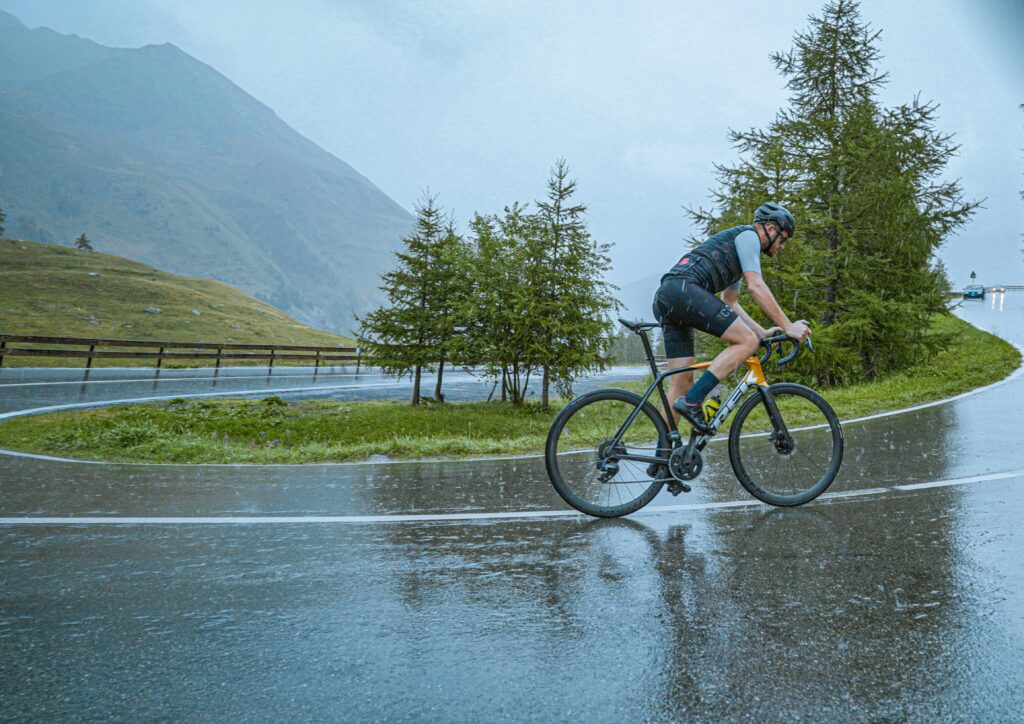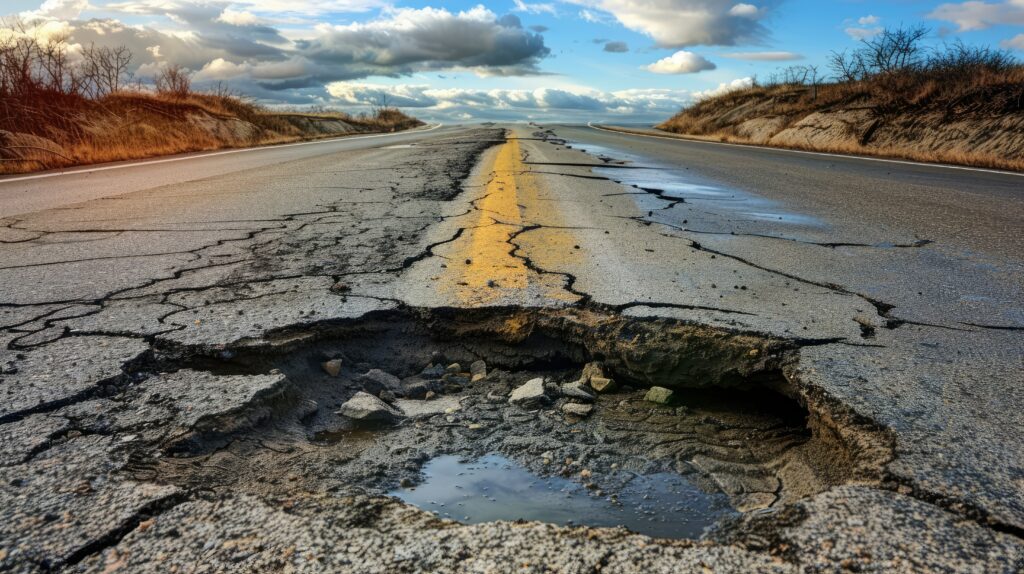Cycling Accidents in 2024: Key Trends and Safety Tips

Cycling accidents have been a growing concern, with approximately 850 reported bicyclist fatalities occurring annually in the U.S. This represents a significant increase, with bicyclist deaths rising by 42.7% since 2010. The trend has shown no signs of slowing down, highlighting the urgent need for improved bicycle safety measures, especially as bicyclist deaths occurred. Additionally, the total traffic fatalities provide a broader context, showing the overall severity of road safety issues and the need for comprehensive safety strategies.
Top Tips for Cycling in the Rain: Stay Safer and Enjoy the Ride

Cycling in the rain can be challenging, but with the right preparation, it can also be enjoyable. In this article, we’ll provide you with essential tips and gear recommendations to stay safe, dry, and comfortable during wet weather rides.
Regional Bicycle and Pedestrian Plan: A Road Cyclist’s Comprehensive Guide to Southern Nevada

Southern Nevada is rapidly transforming into a haven for cyclists, thanks to the Regional Transportation Commission of Southern Nevada’s (RTC) 2017 Regional Bicycle and Pedestrian Plan (RBPP). This ambitious initiative strives to create a comprehensive network of safer, convenient, and accessible cycling routes across urban and suburban areas, catering to cyclists of all ages and abilities. Whether you’re a casual rider or a dedicated road cyclist, the infrastructure upgrades laid out by the RTC will dramatically enhance the cycling experience throughout Southern Nevada. In this comprehensive guide, we’ll explore the details of the RBPP, covering current cycling infrastructure, plans for future expansion, and the benefits these developments will bring to road cyclists. We’ll also discuss the safety challenges cyclists still face and why cyclists involved in accidents should seek the expertise of Lawyers 4 Cyclists, a dedicated legal team specializing in bike-related incidents in Nevada. Vision for Cycling in Southern Nevada At the heart of the RBPP is a vision for a connected, safer, and convenient cycling system that enhances both recreational and transportation opportunities for all users. The plan supports broader goals for economic development, health improvements, environmental sustainability, and equitable access to transportation. This vision is aligned with the Southern Nevada Strong initiative, a regional strategy focused on sustainable growth and long-term economic success. Key goals of the RBPP include: Safety and Comfort: Creating a network of high-comfort facilities designed to protect cyclists from traffic hazards. Connectivity: Enhancing the connection between residential areas, workplaces, parks, schools, and public transit. Health and Equity: Addressing health disparities by improving active transportation options, particularly in underserved communities. Education and Engagement: Raising public awareness about the benefits of cycling and encouraging broader participation. The ultimate goal is to make cycling a viable, safer, and attractive option for all Southern Nevadans, helping to reduce car dependency and improve air quality in the process. Current Bicycle Infrastructure in Southern Nevada As of 2017, Southern Nevada has 868 miles of bike lanes, shared paths, and bike routes. However, only about 46% of these facilities meet the “high-comfort” standards, meaning they are suitable for cyclists of all ages and experience levels. High-comfort routes include features like buffered bike lanes, separated bike lanes, and shared-use paths that physically separate cyclists from traffic, providing a safer and more enjoyable riding experience. The breakdown of current bike infrastructure in the region is as follows: Shared-use Paths (42.7%): These paths are shared by cyclists and pedestrians and are often located away from roadways, providing a safer, more scenic route for recreational riders. Bike Lanes (53.9%): These lanes are marked on roads but not physically separated from traffic, making them more suitable for experienced cyclists. Buffered Bike Lanes (3.1%): These lanes include additional space or barriers between cyclists and motor vehicles, improving safety and comfort. Separated Bike Lanes (0.2%): These lanes are physically separated from traffic by barriers, providing the highest level of safety for cyclists. Despite these existing facilities, there are significant gaps in the network, particularly in high-density urban areas like Las Vegas. Cyclists frequently face challenges such as narrow bike lanes, high traffic volumes, and intersections without adequate cyclist protections. This incomplete infrastructure has left many cyclists, particularly less experienced riders, feeling unsafe or discouraged from using the existing bike network. Future Plans for Expansion The RBPP aims to dramatically expand and improve the cycling infrastructure in Southern Nevada by adding 1,336 miles of new bike facilities. This expansion will bring the total network to 2,023 miles, with a focus on creating “high-comfort” routes that cater to all riders, including families, children, and less confident cyclists. Key areas of focus include: Increased Separation from Traffic: The plan prioritizes the construction of separated bike lanes and buffered bike lanes, particularly along major arterial roads where high-speed traffic poses significant risks to cyclists. Better Connectivity: New bike paths will be designed to connect residential neighborhoods with key destinations such as schools, parks, and employment centers, as well as transit hubs, allowing cyclists to seamlessly integrate biking with public transportation. Trail Networks: Expanding shared-use paths, especially those that provide access to scenic areas like Floyd Lamb Park and the Las Vegas Wash, will create more opportunities for recreational cyclists. Improved Safety Measures: The RTC plans to incorporate traffic-calming measures, improved lighting, and more frequent crosswalks and bike crossings to reduce the risk of accidents. When fully implemented, the RBPP will transform Southern Nevada into one of the most bike-friendly regions in the western United States. About 73% of the future bike network will consist of high-comfort facilities, compared to just 46% today. This will make it easier and safer for cyclists of all ages to navigate the region, whether for commuting, exercise, or leisure. Safety Challenges for Road Cyclists Despite the optimistic outlook, road cycling in Southern Nevada remains fraught with dangers. Between 2011 and 2015, the region experienced an alarming increase in bicycle-related accidents. Most crashes occurred on roadways with speed limits between 35 and 45 mph, where cyclists are particularly vulnerable to fast-moving traffic. Key factors contributing to these accidents include inadequate bike lanes, poor lighting, and intersections that fail to accommodate cyclists. The RBPP addresses these concerns by recommending several critical safety improvements, including: More Separated Lanes: Physically separated bike lanes will provide a buffer between cyclists and vehicles, reducing the likelihood of collisions. Traffic-Calming Measures: The installation of speed bumps, roundabouts, and other traffic-calming features will help slow down cars and make streets safer for cyclists. Intersection Upgrades: Safer intersection designs, including protected bike crossings and improved signaling, will reduce the risk of accidents at key conflict points. However, until these improvements are fully realized, road cyclists in Southern Nevada must remain vigilant and cautious, particularly when riding in high-traffic areas. Public Involvement in the RBPP Public participation has been a crucial element in the development of the RBPP. The RTC has conducted extensive outreach to gather input from cyclists and other stakeholders, ensuring that the plan reflects the needs and desires of the community. More
Navigating Roadway Hazard Claims: A Step-by-Step Guide for Injured Cyclists in California

Attorneys specializing in dangerous roadway condition bicycle crashes- Lawyers 4 Cyclists
Top Risks and Most Common Dangers of Cycling on the Road

Cycling on the road presents many dangers such as potholes, traffic interactions, and low visibility. To ride safely, it’s crucial to understand the most common dangers of cycling on the road and how to navigate them. This guide will help you identify these hazards and provide practical tips for safer cycling. Key Takeaways Common Road Hazards for Cyclists Cyclists face numerous risks from road hazards, which can stem from both environmental factors and human negligence. From potholes to road debris, and poorly maintained bike lanes, these hazards can cause significant injuries or damage to bicycles. Being aware of these dangers and knowing how to navigate them effectively ensures safer rides. Every cyclist should understand the specific types of hazards, such as potholes, debris, and inadequately maintained bike lanes. Each of these hazards requires different skills and awareness levels to avoid accidents. Let’s explore these common road hazards in more detail. Potholes and Uneven Surfaces Potholes can be particularly hazardous for cyclists, often leading to loss of control or severe injuries if not navigated carefully. Hitting a pothole unexpectedly can throw a cyclist off their bike, resulting in serious accidents. Cyclists should develop the skill to navigate around potholes to maintain bicycle safety. This includes staying alert and scanning the road ahead to avoid these dangerous obstacles. Debris on the Road Road debris, including loose materials like gravel and broken glass, poses critical hazards for cyclists and gravel bikes. These can puncture tires, leading to potentially dangerous falls and crashes. Remaining vigilant to notice and avoid such debris is crucial, as neglecting it can result in serious accidents and injuries. Poorly Maintained Bike Lanes Poorly maintained bike lanes can significantly increase the risk of accidents for cyclists. Issues like potholes, debris, and unclear road markings within bike lanes create unsafe conditions that can lead to falls and collisions. These lanes must be adequately maintained to ensure the safety of all cyclists on the road and the bike lane. Interactions with Motor Vehicles The greatest safety risk for cyclists is interactions with motor vehicles. Accidents involving vehicles are often underreported, so cyclists need to be extra cautious. Intersections, in particular, pose substantial risks, especially from turning vehicles that may not always see cyclists. Bicyclists are required to follow the same traffic laws as motorists, including obeying signals and road signs to ensure safety on the road. Cyclists can navigate traffic more safely by understanding the dangers posed by vehicle blind spots, dooring incidents, and close passes. Each of these scenarios requires specific awareness and strategies to avoid accidents. Let’s delve into these common interactions and how to manage them effectively. Vehicle Blind Spots Large vehicles, such as trucks and buses, have extensive blind spots that can put cyclists at significant risk. These blind spots can obscure cyclists from drivers’ views, making collisions more likely. Awareness of these areas and avoiding them whenever possible helps cyclists stay safer. Dooring Incidents Dooring incidents occur when a motorist opens a car door into a cyclist’s path, posing a severe danger. Such incidents often result in severe injuries as cyclists collide with the suddenly opened door. Drivers should check their mirrors before opening doors to prevent these accidents, and cyclists should ride at a safer distance from parked cars. Close Passes Vehicles passing too closely to cyclists pose a significant threat to their safety. Insufficient space when vehicles overtake cyclists can lead to dangerous situations and increase the likelihood of collisions. Motorists should give cyclists ample space when passing to ensure their safety on the road. Navigating Intersections Intersections are high-risk areas for cyclists, with a significant number of collisions occurring in these zones. Right-hook and left-hook collisions are particularly prevalent, happening when vehicles turn across the path of cyclists. Familiarity with traffic signs and signals helps cyclists navigate intersections safely and reduce their risk of accidents. To minimize the risk of collisions at intersections, cyclists should continuously scan for traffic and signal their intentions clearly. Understanding the types of collisions and how to avoid them significantly enhances cyclist safety at these critical points. Right-Hook and Left-Hook Collisions Right-hook collisions occur when a vehicle turns right across the path of an oncoming cyclist, often leading to serious injuries. These collisions typically happen when a vehicle passes a cyclist and then turns right, misjudging the cyclist’s speed or location. Left-hook collisions, on the other hand, occur when a vehicle turns left into the path of a cyclist, often leading to severe accidents. Being vigilant at intersections and signaling intentions helps cyclists avoid dangerous situations. Misunderstood Traffic Signs and Signals Cyclists must understand traffic signals to navigate intersections safely and avoid accidents. Failure to recognize or misinterpret traffic signs can lead to dangerous situations. Cyclists must follow traffic signals closely to ensure their safety and prevent collisions with vehicles. Night Riding and Low Visibility Cycling at night significantly increases the risk of accidents due to lower visibility conditions. Reduced visibility for both cyclists and motorists can lead to dangerous situations. Adopting safer behaviors and practices enhances cyclists’ visibility and predictability on the road. Using a road bike for night riding can be effective, but it is crucial to ensure proper visibility. To improve safety during night rides, cyclists should wear bright clothing and use lights to make themselves more visible to drivers. Additionally, adverse weather conditions like rain and fog can further impair visibility, making it essential for cyclists to adjust their riding techniques accordingly. Importance of Bright Clothing and Lights Bright colors and reflective gear enhance visibility to motorists when riding at night. Front and rear lights on a bicycle ensure that cyclists are seen by others on the road. Reflective gear and bright clothing significantly enhance a cyclist’s visibility, helping to prevent accidents in low-light conditions. Weather Conditions Adverse weather conditions like rain and fog can severely impair visibility, heightening the dangers for cyclists. Cyclists should adjust their riding strategies in such conditions to maintain safety. This includes slowing down, using lights, and wearing appropriate


